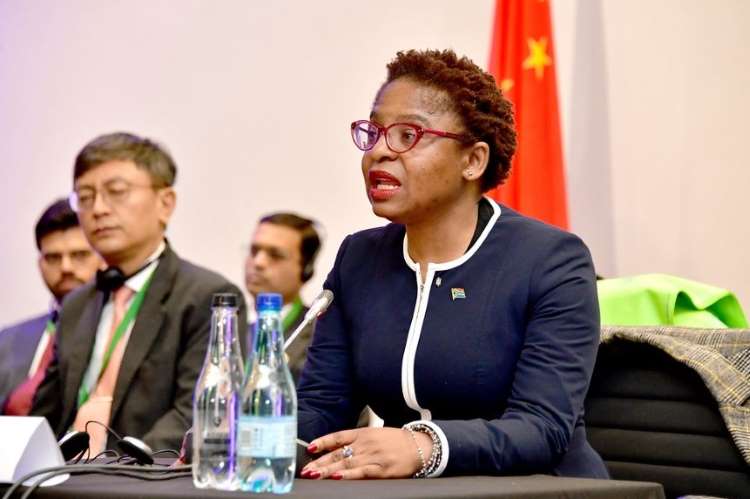
BRICS currency facing hurdles: Brazil, Russia, India, and China organised the first BRIC summit in 2009, and South Africa joined the grouping in 2010, completing BRICS. The grouping’s member countries account for more than 40% of the global population and more than a quarter of the world economy. Its economic muscle has attracted several countries to seek membership. The organisation’s relevance has increased due to geopolitical conflicts like the Russia-Ukraine war, trade tension between the US and China, supply chain disruptions, and sanctions imposed by the West on Russia and Iran.
BRICS has taken two important steps to drive economic growth in a world dominated by the western powers. The first was the setting up of the BRICS Bank (New Development Bank) in 2014 for providing finance for infrastructure and sustainable development projects. The second initiative is the Contingent Reserve Arrangement framework which offers liquidity support during economic crises or payment imbalances.
READ I Dedollarisation in action: Nations seek to reduce dependence on the dollar
BRICS currency not on summit agenda
The 15th BRICS summit in 2023 will be held in August in Durban, chaired by South Africa. The theme of the Summit is BRICS and Africa Partnership for Mutually Accelerated Growth, Sustainable Development, and Inclusive Multilateralism.
The summit’s objectives include developing an equitable just transition, transforming education and skills development, unlocking opportunities through the African Continental Free Trade Area, strengthening post-pandemic socio-economic recovery, and achieving the 2030 Agenda on sustainable development. Additionally, it aims to strengthen multilateralism and enhance the meaningful participation of women in peace processes.
The Chief of the BRICS New Development Bank (NDB) recently emphasised the bank’s success in navigating geopolitical issues. The NDB is focused on scaling up its prospects by deepening its sustainable credentials, local currency cooperation, and private sector operations while strengthening ties with all financial agencies.
Apart from the five BRICS members, the UAE, Egypt, and Bangladesh have already joined the NDB. Saudi Arabia has expressed interest, and Uruguay in the final stages of NDB membership. The NDB chief also noted that 41 countries are ready to accept the BRICS currency.
The common currency is not be on the agenda of the BRICS summit in South Africa next month, but member countries are expected to switch away from the dollar. Brazil President Luiz Inacio Lula da Silva and Russian foreign minister Sergei Lavrov are the main advocates of the idea, but India does not seem enamoured by the concept.
Brazil, Russia, China, and South Africa want to press ahead with the idea of a common BRICS currency, like the Special Drawing Rights of the IMF. The objectives are the dedollarisation of the financial markets, increase in economic autonomy, and a reduction in the exposure to external economic shocks caused by recent sanctions imposed by the US and Western countries.
The potential benefits are reduced dependence on the Dollar as a reserve currency and minimisation of exposure to related risks like changes in US monetary policy, trade sanctions, and geopolitical uncertainties. By facilitating economic integration of member countries, the BRICS currency would boost trade and investment without incurring currency conversion costs or exchange rate risks, allowing free cross-border capital flows.
However, there are a number of challenges to the launch of a BRICS currency. Adequate banking networks and a deep financial market worldwide are essential for global acceptability. Additionally, member countries should maintain stable and low price levels, credible fiscal policies, stable fiscal deficits, and stable currency values. Some BRICS members do not fulfil these criteria, and wild fluctuations in inflation, interest rates, fiscal deficits, and trade deficits among member countries might hinder the journey towards a common currency.
The internationalisation of the rupee involves accelerating cross-border transactions in rupee. While it reduces the cost of holding reserves, it may cause excess exchange rate volatility, especially in the initial stages, and accentuate external shocks.
The RBI has taken steps to promote the international trade settlement in Indian rupee, but challenges remain, including potential loss of monetary policy autonomy, high trade deficit threats, lack of liquidity, exposure to external shocks, speculative capital flows, limited international demand, and difficulties in trade settlement.
Launching an SDR-type BRICS currency with adequate gold backing requires meticulous planning and trust among the member countries, especially between India and China. The success of the BRICS currency depends on mutual acceptance of national currencies within the group and across all member countries. While India has utilised digital methods like UPI transactions with Singapore and UAE, its global trade share remains marginal, raising questions about rupee internationalisation without sacrificing capital controls.
A more viable, efficient, sustainable, and democratic method for developing the proposed BRICS currency is needed to prevent undue advantages for any country and foster cooperation and growth among member nations.
(The author is an economist based in Kochi. He was the head of the Departmentt of Economics, Central University of Kerala, Kasaragod.)
Ravindran AM
Ravindran AM is an economist based in Kochi. He was the head of Department of Economics at the Central University of Kerala. He has also served as Associate Professor, Directorate of Higher Education, Puducherry.

